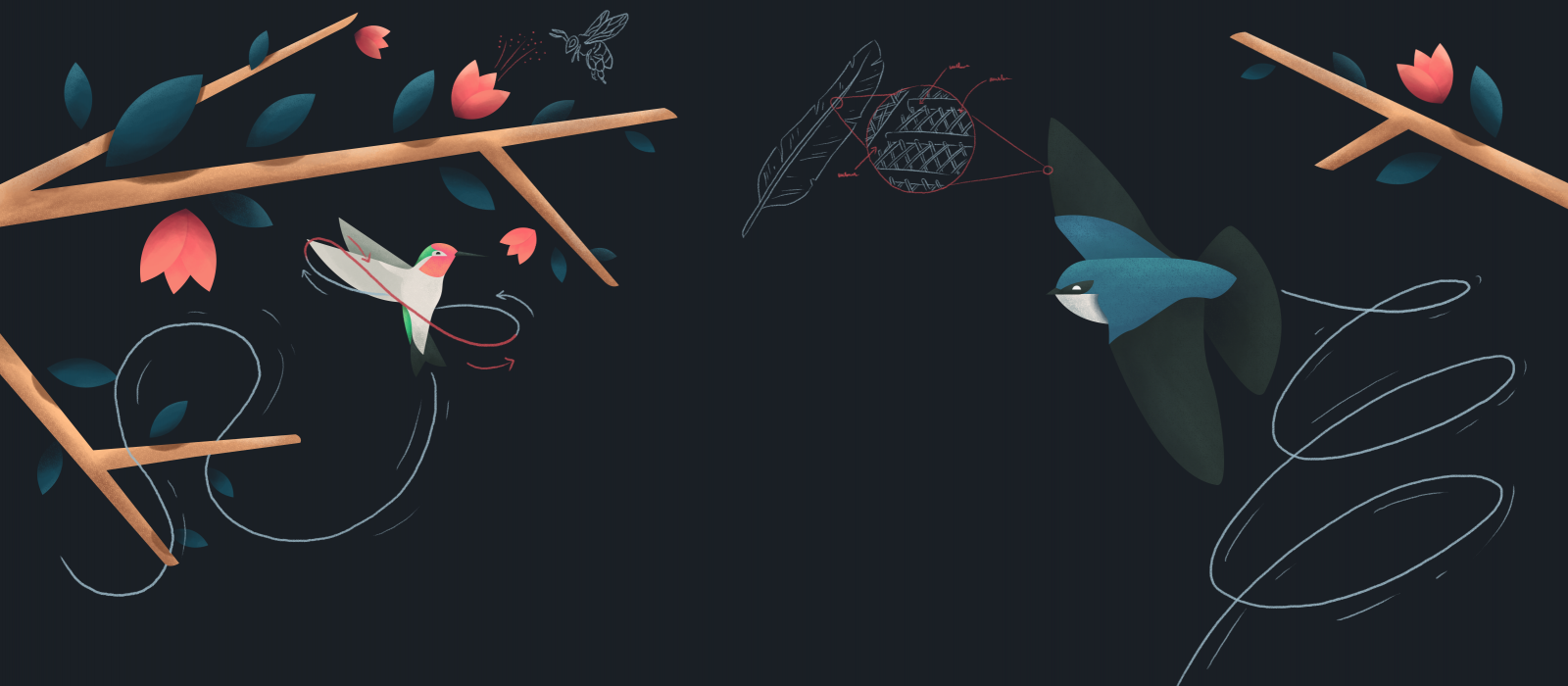From dodging collisions to deciding how much effort to expend on offspring, behaviour provides a means for animals to respond to diverse challenges in nature. The goal of our research is to understand the mechanisms that have evolved to solve sensory, motor, and decision-making problems. Some of our recent interests:
- How animals use multiple cues to guide movement and decision-making
- The function and origin of movement behaviours
- How individual behaviours determine population-level processes
Understanding the mechanistic causes of behavior is necessary to anticipate and solve many applied problems in ecology. Natural behavioural systems can also provide inspiration for solving technological problems (after all, evolution is cleverer than you are). Our approach to animal behaviour often involves gleaning insights from high-throughput data.
Finally, we also aim to inspire broader interest and participation in science through our outreach and teaching activities.
Recent Projects
The biomechanics of maneuverability
The ability of an animal to maneuver – that is, change speed and direction – can mean the difference between life and death. How do biomechanical traits such as body size and shape determine maneuverability, and how does performance evolve? We have been studying this question using comparative studies of hummingbirds. Dakin, Segre et al. 2018
Vision and behavior
Birds can forage, compete, display, and even mate in the air. What visual cues are used to avoid collisions, gauge speed, and transition seamlessly from rapid flight to hover? We are currently interested in testing how birds weight different (and sometimes conflicting) cues during flight, and how they use different visual cues for different modes of flight. Dakin et al. 2016
Social network dynamics
Cooperation is central to reproductive success in many animals, just as it is in humans. How are these behaviours controlled, and how does one individual influence others within a broader social network? Our recent work in this area shows that too much connectivity can destabilize social networks, using data on wild birds. Dakin and Ryder 2020
